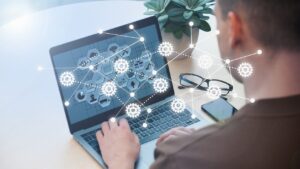
In today’s fast-evolving digital landscape, legacy systems like Microsoft Dynamics SL can hold businesses back with their limited scalability, outdated architecture, and lack of cloud integration. For companies in Japan and around the globe looking to modernize their ERP infrastructure, upgrading to Microsoft Dynamics 365 Business Central offers a powerful solution that supports flexibility, automation, and future-ready performance. In this blog, we explore how businesses can effectively upgrade from Dynamics SL to Business Central, the benefits of making this shift, and why working with an experienced partner like Sysamic ensures a smooth transition.
Why Move Away from Dynamics SL?
Originally known for its project accounting and financial capabilities, Dynamics SL has served many industries well. However, it comes with inherent limitations:
- On-premise only: Lacks native cloud capabilities, increasing maintenance and hardware costs.
- Limited integration: Struggles to connect with modern platforms and services.
- Manual workflows: Lacks automation, slowing down operations.
- Reduced Microsoft support: Ongoing development and enhancements are now focused on Business Central and other cloud-first solutions.
These limitations make it difficult for Japanese and global businesses to remain agile in a digital economy where integration, data visibility, and automation are critical.
Why Business Central Is the Ideal Upgrade
Microsoft Dynamics 365 Business Central is an all-in-one, cloud-based ERP system that offers:
- Scalable cloud infrastructure (Azure)
- AI-driven automation
- Real-time data access across departments
- Seamless integration with Microsoft 365 and Power Platform
- Localization support for Japan, including tax rules and reporting
Business Central empowers teams to make data-driven decisions, adapt quickly to market shifts, and reduce operational inefficiencies—essential for modern business resilience.
Key Steps to Upgrade from SL to Business Central
A successful upgrade involves more than just migrating data. It’s about rethinking workflows, integrations, and long-term goals. Here’s how Sysamic approaches it:
- Initial Assessment: We analyze your current SL setup, identify core business processes, and map out compatibility with Business Central modules.
- Data Migration Strategy: Clean, transform, and migrate historical and live data while ensuring accuracy, integrity, and compliance with Japanese data regulations.
- Process Mapping and Reengineering: We redesign outdated workflows using Business Central’s automation tools and industry-specific capabilities.
- Custom Development and Integration: Whether it’s linking to Japanese banking systems or integrating third-party applications, we ensure seamless connectivity.
- User Training and Change Management: We prepare your team with localized training sessions in Japanese or English and provide support post go-live.
- Go-Live and Optimization: Once deployed, we monitor performance, refine configurations, and support further enhancements.
Why Choose Sysamic?
At Sysamic, we specialize in helping Japan-based companies transition from legacy systems like Dynamics SL to modern platforms like Business Central. Our services include:
- In-depth local market understanding
- Experience in finance, construction, insurance, and software industries
- Expertise in Microsoft Azure, Power Platform, and ERP integrations
- A phased, low-risk migration approach customized for Japanese businesses
We don’t just upgrade your ERP — we align it with your long-term growth goals.
Conclusion
Upgrading from Dynamics SL to Business Central isn’t just a technical change — it’s a strategic move toward greater efficiency, innovation, and business agility. With the right partner, the process can be smooth, cost-effective, and transformational.
